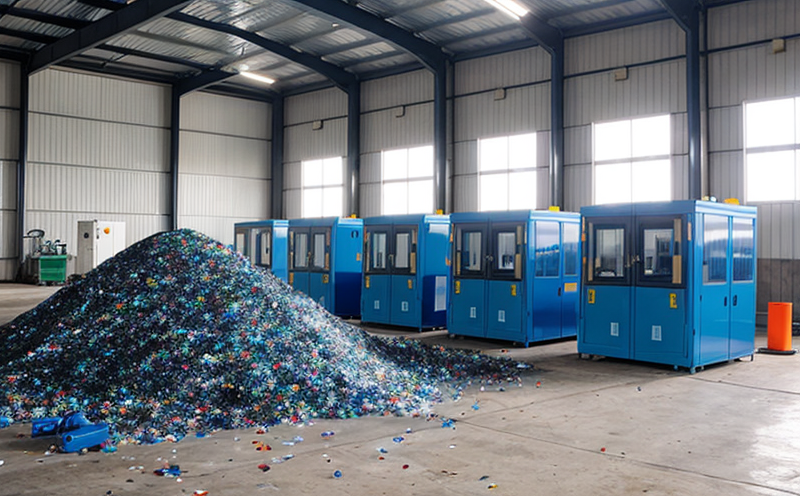ASTM D7895 Recycling of Plastic Construction Waste
The ASTM D7895 standard provides a comprehensive methodology for recycling plastic construction waste. This process is crucial in the construction sector, where the demand for sustainable practices and resource conservation is increasing.
The primary goal of this standard is to ensure that plastic materials from construction projects can be effectively recycled into new products without compromising on quality or performance. The test procedure outlined in ASTM D7895 involves several critical steps:
- Sorting and segregation of waste plastics based on type (e.g., polyethylene, polypropylene).
- Shredding the plastic materials into small particles to facilitate processing.
- Precleaning and washing to remove contaminants such as paint residues or adhesives.
- Sorting again if necessary to ensure purity of recycled material batches.
The standard also specifies how to blend different types of plastic waste into a homogenous batch, which is essential for achieving consistent quality in the final product. The blending process must be carefully controlled to avoid creating variations that could affect the performance of the new materials.
A key aspect of this test procedure is the use of appropriate instrumentation and equipment such as shredders, wash tanks, and sorting machines. These tools ensure that the waste plastic can be processed efficiently while maintaining its integrity for recycling purposes.
The acceptance criteria in ASTM D7895 are stringent to guarantee the recycled materials meet or exceed the quality standards required by construction projects. This includes tests for mechanical properties like tensile strength and impact resistance, as well as chemical analysis to ensure that any residual contaminants do not affect the performance of the finished product.
The results from this testing process provide critical data that helps stakeholders in the construction industry make informed decisions about sustainable practices. By adhering to ASTM D7895, organizations can ensure they are contributing positively to environmental goals while maintaining high standards of quality and safety.
Benefits
The implementation of ASTM D7895 offers numerous benefits across various sectors. For construction companies, it facilitates the integration of sustainable practices into their operations, enhancing their reputation for environmental responsibility.
For suppliers and manufacturers involved in plastic recycling, adherence to this standard ensures that they produce materials that meet stringent quality benchmarks, thereby increasing market competitiveness. Compliance also opens up opportunities for partnerships with environmentally conscious clients.
From a regulatory perspective, meeting the requirements of ASTM D7895 helps companies avoid penalties associated with non-compliance and supports broader initiatives aimed at reducing waste in landfills and promoting recycling.
Why Choose This Test
- Ensures recycled materials meet strict quality standards, enhancing product performance.
- Promotes sustainable construction practices by reducing waste and conserving resources.
- Aids in compliance with regulatory requirements, avoiding potential penalties.
- Facilitates the creation of a secondary market for plastic waste from construction projects.
Use Cases and Application Examples
The ASTM D7895 test is widely used in numerous applications, particularly within the construction industry. One common use case involves sorting and recycling plastic waste from demolition sites of old buildings. The sorted plastics are then processed according to ASTM D7895 standards to create new products such as flooring materials or insulation.
In another scenario, this test is employed by manufacturers who produce recycled content building products. By following the procedures outlined in ASTM D7895, they ensure that their products maintain high performance levels while being environmentally friendly.
Additionally, construction firms can utilize the results from ASTM D7895 testing to demonstrate their commitment to sustainability during bidding processes or negotiations with clients who prioritize eco-friendly solutions.





